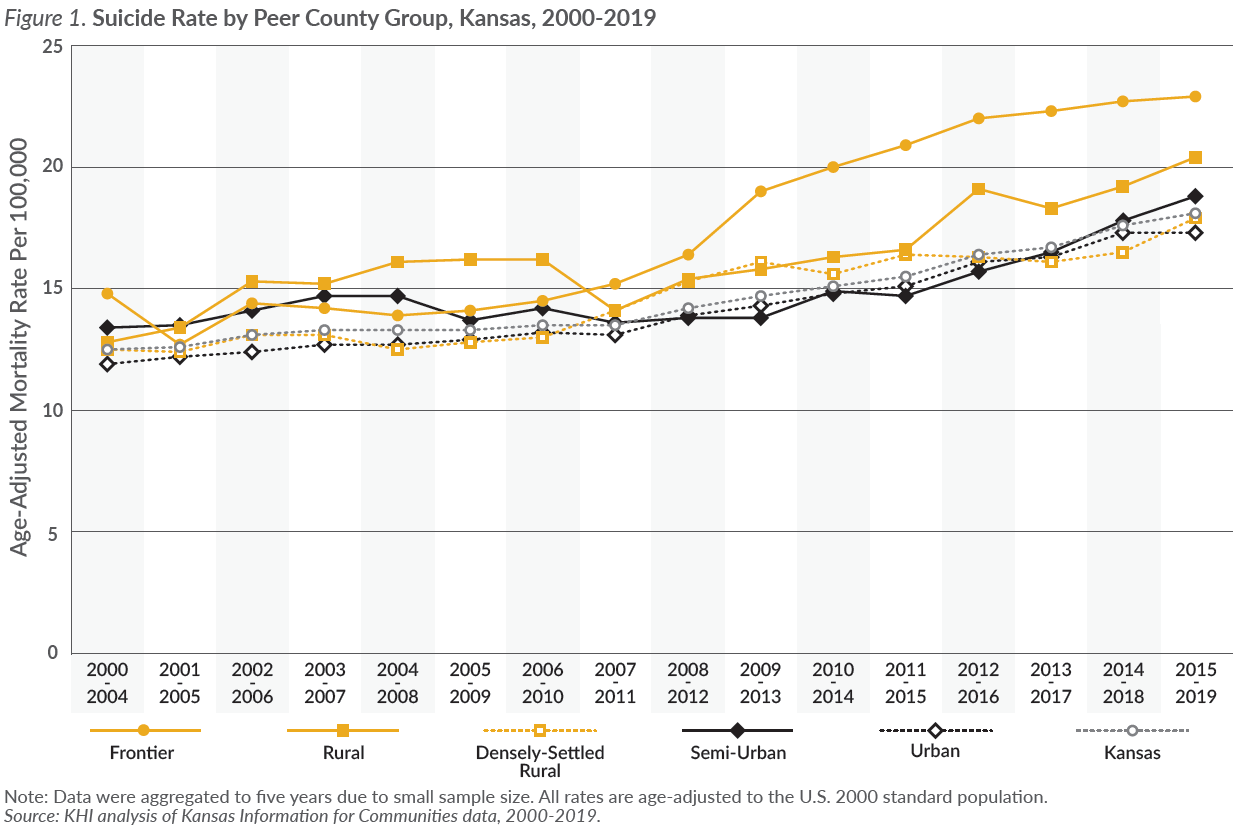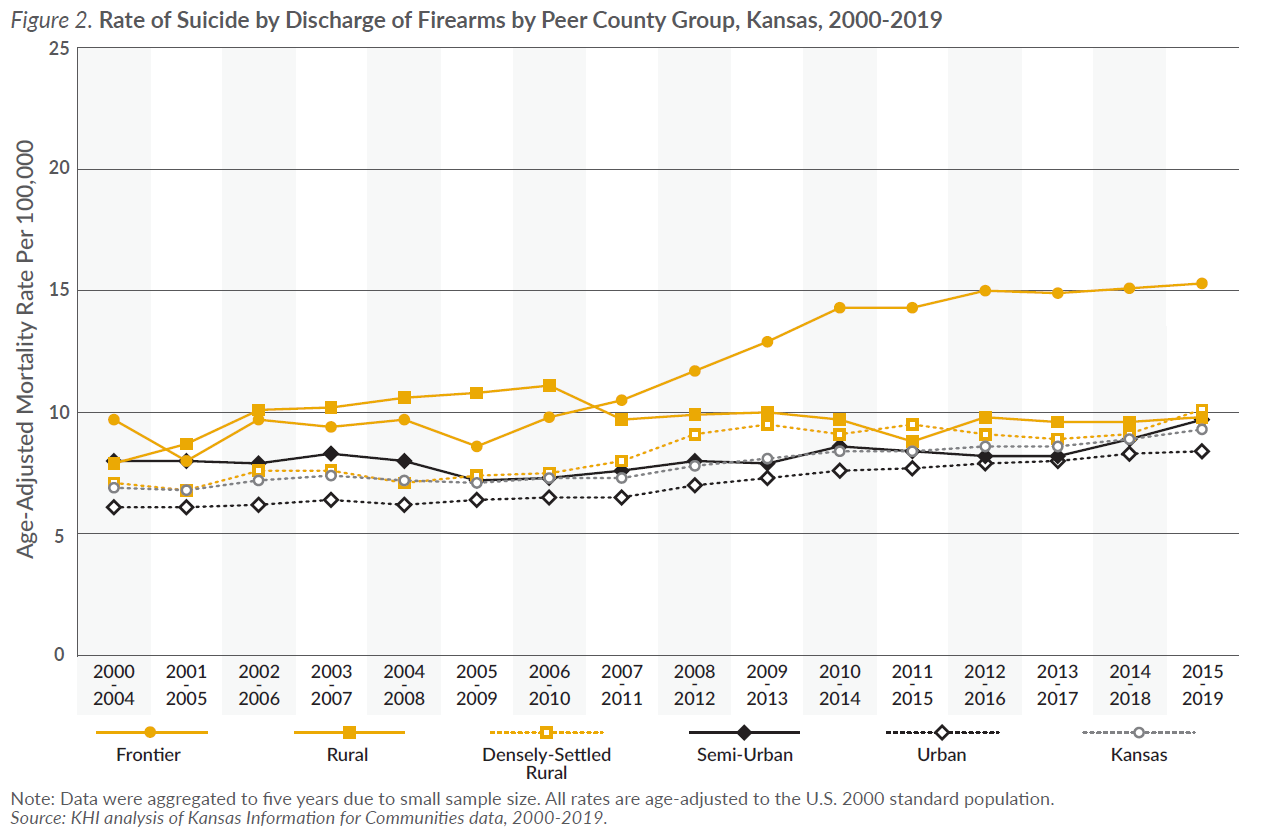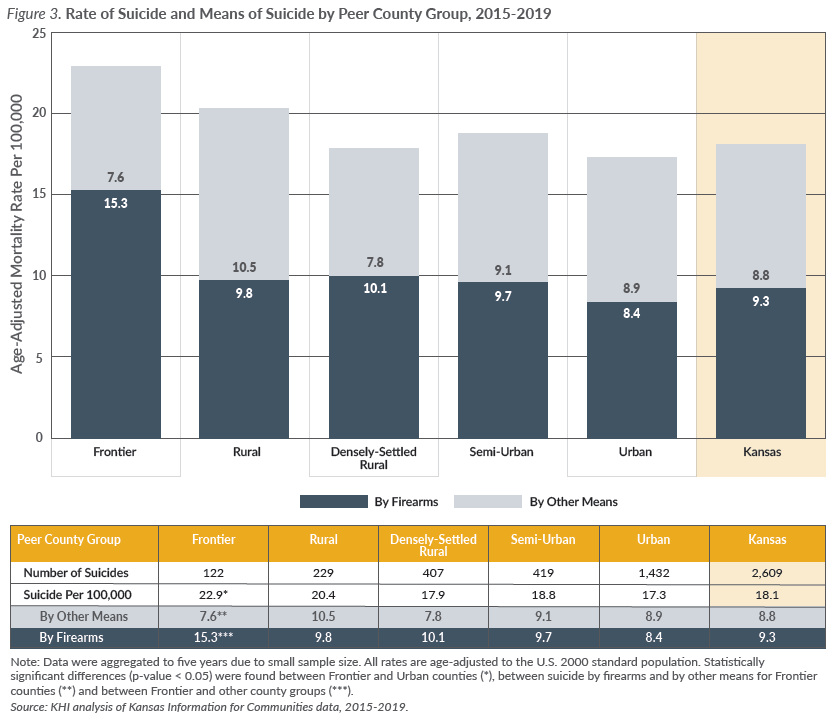Introduction
Suicide was the ninth leading cause of death in Kansas in 2019 and the 10th leading cause of death in the U.S., and the suicide rates have been increasing. In both Kansas and the U.S., discharge of firearms has been the leading means of suicide. The suicide rate in Kansas, 18.2 per 100,000 population (age-adjusted to the U.S. 2000 standard population), was the 16th highest in the country in 2019. Nationally, suicide rates ranged from 8.0 per 100,000 in New Jersey to 29.3 per 100,000 in Wyoming. While rising suicide rates across the nation have drawn attention, urban-rural differences also have been noticed. Rural areas have experienced a higher suicide rate than urban areas, regardless of age, sex, race or ethnicity.
The majority (89 of 105) of counties in Kansas are considered rural by population density, including Frontier, Rural and Densely-Settled Rural counties, according to the peer county group classification used by the Kansas Department of Health and Environment. This issue brief highlights how suicide rates and the means of suicide have changed over time and have varied across Kansas, with a close look at differences by rurality. A better understanding of urban-rural differences in rates and means of suicide could help devise unique policies and programs to meet the needs of local communities.
Rising Suicide Rates in Kansas
Increase in Rural Counties Outpaces Non-Rural
Over the past 20 years, the rate of suicide across Kansas has steadily risen, from 12.5 per 100,000 population in 2000-2004 to 18.1 in 2015-2019 (Figure 1). This translates to an increase of 44.8 percent, or nearly 1.5 times higher. Though the suicide rate increased gradually, it began to rise more quickly after 2007-2011. This pattern was observed across Kansas counties of all population densities, and the suicide rate in 2014-2018 and 2015-2019 was significantly higher than 2000-2004 for each group of counties.




